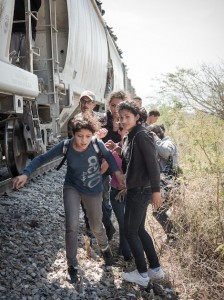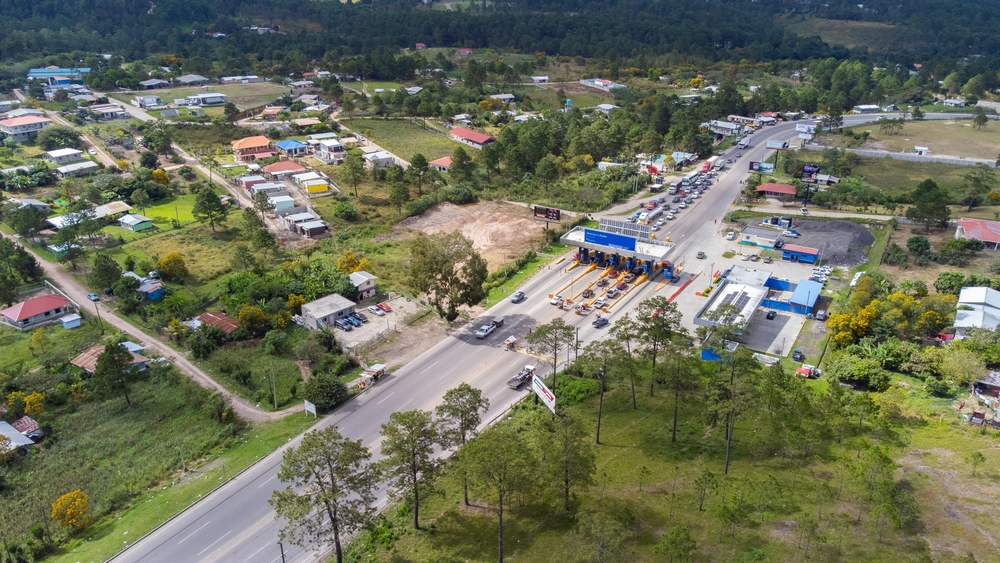 There’s been a blitz of stories over the past couple of weeks on child migrants arriving on the U.S.’s southern border. For many of us in Mexico, this is not new. But US press attention to it is relatively new, as one major media outlet after another features stories on the plight of unaccompanied minors.
There’s been a blitz of stories over the past couple of weeks on child migrants arriving on the U.S.’s southern border. For many of us in Mexico, this is not new. But US press attention to it is relatively new, as one major media outlet after another features stories on the plight of unaccompanied minors.
It’s certainly positive that these children do not remain invisible. What they go through should be cause for indignation on a global level. The Office of the UN High Commissioner for Refugees issued a report last March that found that half had experienced or been threatened with serious harm on the journey north.
But most of these mainstream press stories are telling half-truths about child victims, while muddling or downright manipulating the question of who and what is responsible.
The New York Times, AP and others outlets have been running stories that follow a pattern of emphasizing two general conclusions. One, that parents in the United States are selfishly and irresponsibly encouraging this phenomenon and putting their own children at risk by sending them north and, two, that more children are migrating to the United States because they perceive Obama administration policies and practices as lenient on child migrants and think they have a good chance of staying–even if they get caught.
Although most of these stories mention conditions of poverty and violence in the places where the children come from, they almost never mention how these places have become so poor and violent, or much less the direct role that U.S. foreign policy has played in making them that way and forcing the children to leave.
To give a few examples: In April the NYT ran a story on child migration focused on a 12 year-old Ecuadorean girl who apparently committed suicide in a shelter in Ciudad Juarez, Mexico. The article stressed the grandparents’ reluctance to let her go and the insistence of the parents, who live in New York. It described the lone terror of the girl and her body found in the shower. It did not delve into the circumstances or the allegations that Mexican police captured her before her arrival at the shelter, or why her parents could not provide for their family in Ecuador.
Readers were left with the impression that it was the parents’ fault, not a system of injustice that stretched from the Andes to the US-Mexico border.
This induced conclusion was reflected in the gist of many of the hundreds of comments on the page that expressed genuine compassion for the death of the dark-eyed child in indigenous dress, but also many variations on this comment: “The parents are at the root of this crime”.
An AP story June 3 leads with a 14 year-old boy heading north with friends, saying that he had heard that minors were being allowed to stay in the U.S. Alhough the story later mentions the conditions of violence in his native Honduras, again there is no context and the boys seem to be going to the border to take advantage of the US government’s largesse–a message that is inflaming anti-immigrant forces.
The AP follows up with this interpretation in a June 6 story stating the thesis explicitly: “Rumors of asylum raise hopes for migrant families”. These stories present anecdotal evidence of the thesis that the spike in child migration is due to hopes of being allowed to stay, in the form of interviews that often appear to have been reporter-led into giving this as the cause. In fact, none of the unbiased surveys on reasons for leaving list lenient migration practices in the U.S. as a major cause.
The predictable result of the spate of articles on children migrants is to urge the creation of more detention facilities (potentially good for the private prison industries) and call for an end to releases, as noted in the AP article:
Texas Gov. Rick Perry last week asked that the Department of Homeland Security stop releasing immigrants with notices to appear. On Monday, Arizona Gov. Jan Brewer asked the same for the hundreds of immigrants, mostly women and children, who in recent weeks have been flown to Arizona from South Texas for processing.
Following the thread, a New York Times article June 7 called “Child Migrants Strain Make-Shift Arizona Shelter” described a veritable junior brown tide (the article did not use that traditional racist term but some of the language implies it) pouring into the US. The article echoed the criticisms of Arizona’s anti-immigrant governor Janet Brewer regarding administration efforts to house the migrants:
“I am disturbed and outraged that President Obama’s administration continues to implement this dangerous and inhumane policy, meanwhile neglecting to answer crucial questions our citizens demand and deserve,” the governor, a Republican, said in a statement late Friday.
Not once did the article bother to cite an immigrant or an immigrants’ rights advocate, of which there are, fortunately, many in Arizona. Much less did it or any of the other articles on the issue mention a need for policies that would facilitate family reunification.
Children in harm’s way
No one would argue that it is a good idea to attempt to bring a child to the United States without a trusted companion. Note that these children are not usually “unaccompanied”. Their parents have paid large sums of money to smugglers to bring them over the border safely. But they often do not know the smugglers and human smuggling has become a big business for organized crime over the past decade, thanks in large part to increased security making it necessary for anyone trying to cross to hire professional help. As the cost of crossing went up, organized crime recognized a new business opportunity and replaced independent coyotes or relatives in getting migrants over the border.
The press stories seek to pull heartstrings over the trials and traumas of the kids, while containing a strong hidden message of opprobrium against the parents. How could they let this happen? How selfish of them to expose their children to such perils!
Maybe the reporters and publishers don’t have children. Or maybe they do, and they simply cannot imagine what it’s like to know your son is growing up and you cannot be there for him, or to mark your daughter’s birthday on a calendar and wonder what she looks like now. This heart-wrenching tragedy, repeated millions-fold, is the direct result of US immigration policies. Where is the outrage that the United States does not even have basic mechanisms to provide for family reunification?
A New York Times editorial at least took a somewhat more compassionate view of the situation, recognizing the “false narrative” of the enforcers:
The crisis comes at a bad moment in America’s stalemated immigration debate, with Republicans gleefully seizing on a situation seemingly tailored to fit their false narrative, that any reform short of an aggressively militarized border will create yet another magnet to pull more of the wretched poor over our border, and that all the chaos in the system is Mr. Obama’s fault.
As an example, it quoted Bob Goodlatte, the Republican chairman of the House Judiciary Committee:
“Word has gotten out around the world about President Obama’s lax immigration enforcement policies, and it has encouraged more individuals to come to the United States illegally… Enforcement at the border and in the interior of the U.S. is crucial to end these kinds of situations, not another bureaucratic task force.”
The editorial emphasized the “push” factors and that children “are fleeing for their lives”. It called for the government to humanely attend to the flows but did not mention longer-term solutions regarding disastrous U.S. policies in their home countries.
On June 3, President Obama referred to the “humanitarian crisis” and issued a memorandum calling for the formation of a “Unified Coordination Group” to attend to unaccompanied children migrants. He asked for $1.4 billion dollars to create infrastructure for the influx of minors.
An article in VOX notes that the US government seems to understand that the real solution lies in improving conditions in countries of origin but has failed to address them:
Ultimately, any long-term solution has to address not only the “pull factors” that bring children here, but the “push factors” that drive them out of their own countries. The federal government appears to understand this, but there aren’t many good ideas for how to deal with it. Last week, Jeh Johnson, the Secretary of Homeland Security, suggested to Congress that the US government could launch a public-awareness campaign in Central American countries to advertise the dangers of migrating to the United States.
Again the “solution” suggested blames the victims for risking the journey.
So why does the mainstream press seek to place the blame on the parents and a supposed softening of immigration policy?
Because the alternative to blaming migrant families themselves is unpalatable to them.
The alternative is to accept that the Central American and North American Free Trade Agreements have left thousands of youth with no economic opportunities.
It is to accept that US security aid for drug wars has armed and aggravated violence in Mexico and Central America.
It is to understand the high cost of supporting the Honduran coup and how the Honduran people and the US population continue to pay that price, as out migration has surged over 500% in the past two years and human rights violations, instability and violence are skyrocketing.
In my travels to migrant shelters and interviews with migrants coming through Mexico I have found that, astoundingly, they do realize the risks and yet decide to make the journey anyway.
The public-awareness campaign we really need is one addressed to U.S. citizens and Congress regarding the impact of economic and security polices on their southern neighbors, and especially on the children.
Then we need a public action campaign to do something about it.
Originally published June 9, 2014 on the Americas Program’s MexicoBlog.



